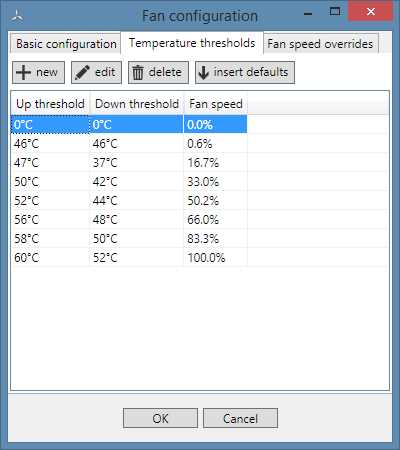

This feature is implemented in a number of Analog Devices fan controllers, such as the ADM1031 and the ADT7460. In order to be sure of a correct fan speed reading under PWM control, it is necessary to periodically switch the fan on long enough to get a complete tach cycle. Tachometer-output waveform in 3-wire fans-ideal, and under PWM control. Thus, while the ideal tach is representative of the actual speed of the fan, the PWM drive in effect “chops” the tach signal output and may produce erroneous readings. Because the tach output is typically from an open drain, it will float high when the PWM drive is off, as shown in Figure 1. When the PWM drive is switched to the off phase, the fan’s internal tach signal-generation circuitry is also off. With low- frequency PWM, however, the tach signal is valid only when power is applied to the fan-that is, during the on phase of the pulse. It is always valid, since power is continuously applied to the fan. The tach signal, when driven by a dc voltage, has a square-wave output closely resembling the “ideal tach” in Figure 1. The tach signal indicates whether the fan is running and its rate of speed. The difference between 2-wire fans and 3-wire fans is the availability of feedback from the fan for closed-loop speed control. This form of speed control is open-loop.Ī 3-wire fan can be controlled using the same kind of drive as for 2-wire fans-variable dc or low-frequency PWM. This means that there is no indication as to how fast the fan is running-or indeed, if it is running at all. However, with only two wires, a tach signal is not readily available. PWM, in brief, uses the relative width of pulses in a train of on-off pulses to adjust the level of power applied to the motor.Ī 2-wire fan is controlled by adjusting either the dc voltage or pulse width in low-frequency PWM. A 4-wire fan has power, ground, a tach output, and a PWM-drive input. A 3-wire fan has power, ground, and a tachometric (“tach”) output, which provides a signal with frequency proportional to speed. low-frequency pulse-width modulation (PWM)Ī 2-wire fan has power and ground terminals.The methods of fan control to be discussed here include: We will discuss here various fan types and the advantages and disadvantages of control methods in use today. There are many different types of fans and ways of controlling them. running a fan slower increases its reliability and lifetime.running a fan slower can reduce the power it consumes,.running a fan slower reduces the noise it emits,.Speed control-one way to answer some of these objections to the use of a fan-can have these advantages: The fan is also one more mechanical component in the system, not an ideal solution from a reliability standpoint. It is also an additional source of power consumption in the system-a very important consideration if power is to be supplied by a battery. A good alternative is active cooling, introducing a fan into the system to generate airflow around the chassis and the heat-generating components, efficiently removing heat from the system. However, these have proved insufficient in many popular consumer electronics products-and they are also somewhat expensive. The quietest way to remove heat is with passive components such as heat sinks and heat pipes. This heat needs to be removed quietly and efficiently. What these systems all have in common, besides significantly smaller-and still decreasing-size, is that the amount of heat they must dissipate does not decrease often it increases! In the notebook PC, much of the heat is generated by the processor in the projector, most of the heat is generated by the light source. Other examples of this trend include projection systems and set-top boxes.

Thin and “Lite,” notebook PCs have shrunk significantly, yet their processing power has been maintained or increased. Consequently, lots of electronic components are being shoehorned into very small form factors. The trend in electronics, particularly consumer electronics, is towards smaller products with enhanced combinations of features. This article will describe how and why this evolution has taken place and will suggest some useful approaches for the designer. However, in recent years, the technology of using these fans has evolved significantly. Compact electrical fans are cheap and have been used for cooling electronic equipment for more than half a century. Interest has been growing in integrated circuits for controlling the speed of cooling fans in personal computers and other electronic equipment.
#No profile notebook fancontrol how to#
Why and How to Control Fan Speed for Cooling Electronic Equipment


 0 kommentar(er)
0 kommentar(er)
